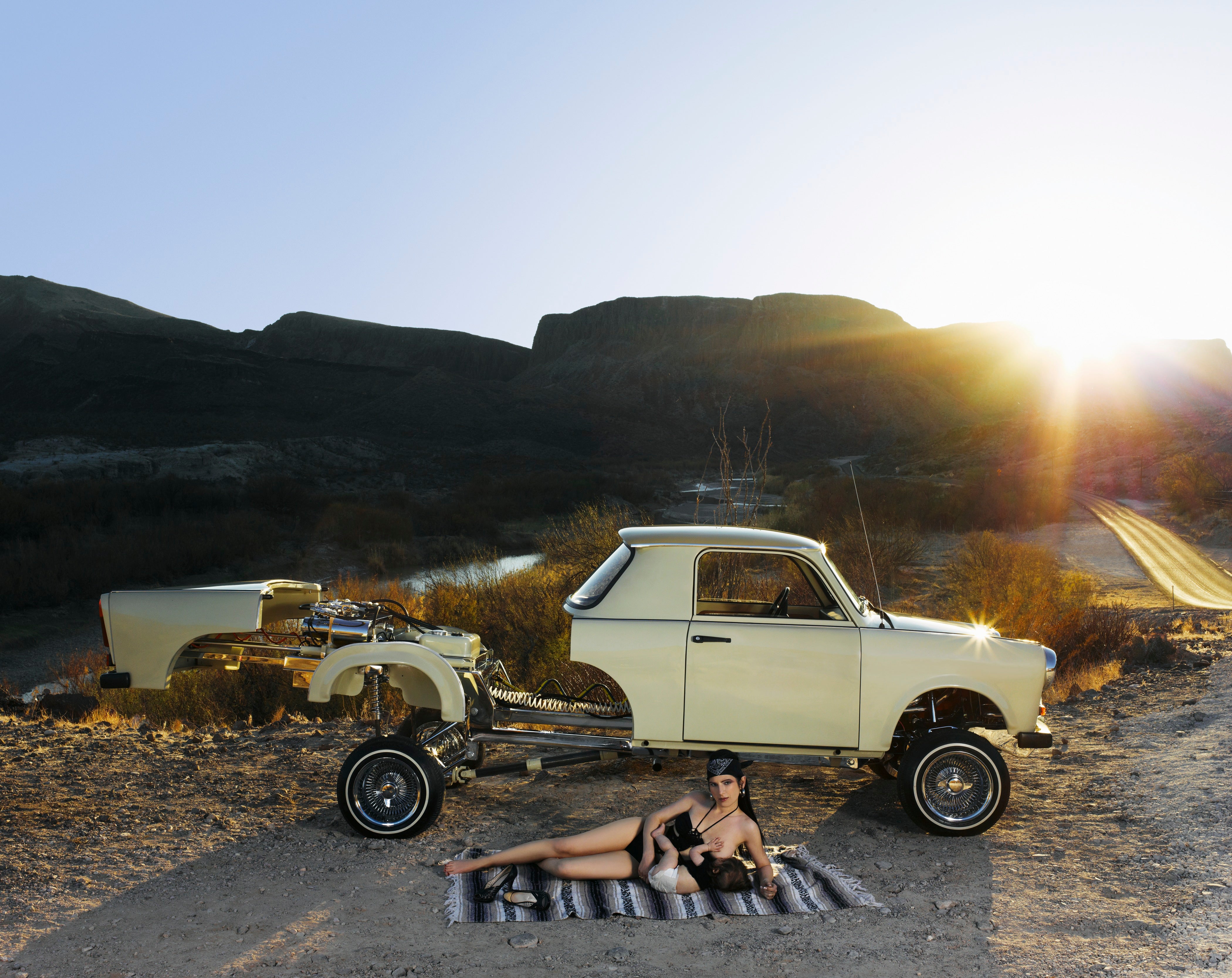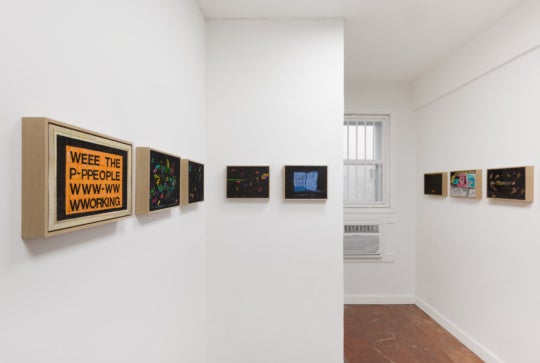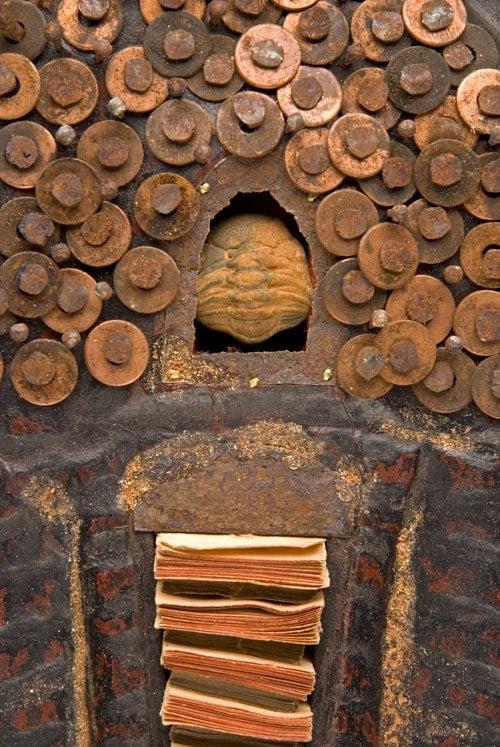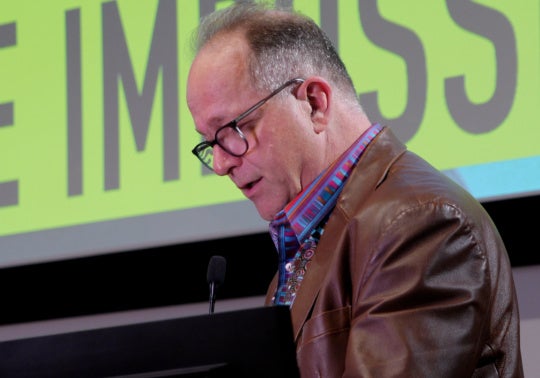
Click here to order BURNAWAY #2: EXCHANGE!
What’s at stake, for artists and institutions, in being regional today? A panel at the 2014 College Art Association’s annual conference in Chicago, “Regionalism in Art: New Perspectives of Here,” took on the question. Two curators of contemporary art—Claire Schneider, an independent curator who has worked at the Albright-Knox Art Gallery in Buffalo and the Scottsdale Museum of Contemporary Art, and Xandra Eden, a curator at the Weatherspoon Art Museum at the University of North Carolina, Greensboro—organized the discussion, which departed from a shared conviction that, in a decentering art world, the experience of being local deserves a closer look.
In convening the panel, the two curators cited signs of increasing interest in varieties of local and regional identity and artistic practice, both within the U.S. and as connections between the U.S. and strategically chosen neighbors. For example, in September, Crystal Bridges—the Walmart fortune-funded museum of American art in Bentonville, Arkansas—will present “State of the Art: Discovering American Art Now,” an exhibition of more than 100 artists from around the country that aims to offer “an unusually diverse and nuanced look at American art,” according to the museum’s website. (Eden was a curatorial advisor to the project, which she sought neither to promote nor to criticize, saying that its stated goal to showcase under-recognized artists intrigued her. “It begs the question: Under-recognized by whom? And how would a show in Bentonville, Arkansas, change this?” she said.)
What’s more, exhibitions devoted to regional connections across U.S. national borders also seem to be multiplying. Scheduled for 2018, “Pacific Standard Time: LA/LA” intends to explore links between Latin American and Latino art and the city of Los Angeles. In 2013, the Orange County Museum of Art launched its “California-Pacific Triennial,” bringing together artists from California, Oregon, Washington State, Canada, Japan, Peru, Vietnam, Mexico, China, Chile, and Korea, all associated by their Pacific Ocean coastlines; and earlier this year, SITE Santa Fe began “SITElines,” a team-curated, three-installment biennial series of art from throughout the Western Hemisphere.
Schneider expressed hope that evolving interest in place as a context for art making will awaken more attention for American artists who live and work outside of New York City. She was one of six curators of the 2011 exhibition “here.” at the Pennsylvania Academy of the Fine Arts, for which she selected four Phoenix artists. One was Gregory Sale, whose community-based work with members of Arizona’s criminal justice system (prison inmates, lawmakers and law enforcement, the general public) at Arizona State University Art Museum generated national attention. Schneider also cautioned that with interest in local and regional practices comes pressure on artists to represent places and cultures; she gave a nod to PAFA’s approach of inviting regionally embedded curators to suggest artists for “here.”
“Sometimes, when people start thinking about regionalism, they’re thinking about it as really connected to place, and the identity of that place, and they want to pick an artist who somehow matches the cliché of that place, even,” Schneider said. “What I’m interested in is finding the best international-quality contemporary artists there and thinking about how their practice somehow might influence where they choose to live, which I think is a slightly different perspective.”
Eden is less invested in advocating for local and regional artists per se, and more interested in broadening perspectives on how the context of place influences art making. Cities where contemporary art is not supported by a gallery system—such as Greensboro, North Carolina—may nevertheless have much to offer artists for whom building and leveraging community is of greater value than art sales, she pointed out. “We have different kinds of conversations here because there isn’t a market,” Eden said….
Read the full article in BURNAWAY #2: EXCHANGE!
CLICK HERE TO ORDER.
IN PRINT: The View From Here: Art From the Regions
Related Stories
Reviews
Features
BA x Oxford American
Bryan Castro: to stutter / to atomize / to interrupt at D.D.D.D., New York City
Valentin Diaconov reviews the aesthetic of stuttering found in Bryan Castro: to stutter / to atomize / to interrupt at D.D.D.D., New York City.
Memory Reliquaries: Daniel Essig’s Bricolage Of Meaning-Making
Sophia Wright profiles the work of Daniel Essig, an Asheville-based artist whose sculptural books bridge together the ancient and spiritual with contemporary craft.
Inside Rice University’s 2025 UFO Conference
In June's co-publishing partnership with Oxford American, UFO enthusiast and author Will Clarke goes behind the scenes at Rice University’s 2025 Archives of the Impossible Conference in Houston, Texas.




